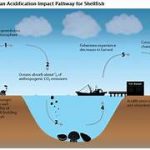Are Greenhouse Gases the Primary Cause of Climate Change?
Climate change, often referred to as global warming, is one of the most pressing challenges of the 21st century. It manifests through rising global temperatures, melting ice caps, rising sea levels, and an increase in extreme weather events. At the core of the discussion around climate change lies a fundamental question: Are greenhouse gases (GHGs) the primary cause?
In this article, we will examine the role of greenhouse gases in climate change, explore the scientific evidence, and discuss how human activities contribute to the increasing concentration of these gases in the atmosphere. We will also consider alternative viewpoints and the broader implications of this phenomenon.
Understanding Greenhouse Gases and Their Function
Greenhouse gases are atmospheric gases that trap heat within the Earth’s atmosphere, creating a “greenhouse effect.” This process is natural and essential for life on Earth, as it keeps the planet’s average temperature at a livable level of approximately 59°F (15°C). Without the greenhouse effect, Earth would be a frozen, uninhabitable world.
The major greenhouse gases include:
- Carbon Dioxide (CO₂): Released through natural processes like respiration and volcanic eruptions, as well as human activities such as deforestation and burning fossil fuels.
- Methane (CH₄): Emitted during the production and transport of coal, oil, and natural gas, as well as through livestock digestion and organic waste decomposition.
- Nitrous Oxide (N₂O): Produced from agricultural and industrial activities, as well as combustion of fossil fuels and biomass.
- Water Vapor (H₂O): The most abundant greenhouse gas, though its concentration is controlled by natural cycles like evaporation and precipitation.
- Fluorinated Gases: Synthetic gases such as hydrofluorocarbons (HFCs) used in industrial applications.
While the greenhouse effect itself is natural, human activities have intensified this effect by increasing the concentrations of these gases, particularly CO₂, CH₄, and N₂O.
The Science Behind Greenhouse Gases and Climate Change
1. The Greenhouse Effect
When sunlight reaches the Earth, some of it is absorbed and warms the planet’s surface, while the rest is reflected back into space as infrared radiation. Greenhouse gases absorb and re-emit this infrared radiation, trapping heat in the atmosphere. This process is vital for maintaining Earth’s temperature, but excessive greenhouse gas concentrations amplify the effect, leading to global warming.
2. Human Contribution to GHG Emissions
The Industrial Revolution marked a significant turning point in greenhouse gas concentrations. The widespread use of fossil fuels—coal, oil, and natural gas—led to a dramatic increase in CO₂ levels. Deforestation, agricultural expansion, and industrial processes have further contributed to these emissions.
Key data:
- Atmospheric CO₂ levels have risen from pre-industrial levels of around 280 parts per million (ppm) to over 420 ppm in 2025.
- Methane concentrations have more than doubled since pre-industrial times, largely due to livestock farming and fossil fuel extraction.
- Nitrous oxide emissions have increased significantly due to the use of synthetic fertilizers in agriculture.
3. Evidence from Climate Models and Observations
Climate models consistently show that rising GHG concentrations correlate with global temperature increases. Observations include:
- The Earth’s average surface temperature has increased by about 1.1°C (2°F) since the late 19th century, with the past decade being the warmest on record.
- The melting of polar ice caps and glaciers is consistent with warming predictions.
- Sea levels have risen by approximately 8 inches (20 cm) since 1880, primarily due to thermal expansion and melting ice.
Are Greenhouse Gases the Primary Cause?
The overwhelming consensus among climate scientists is that greenhouse gases are the primary drivers of current climate change. This conclusion is supported by multiple lines of evidence:
1. Correlation Between GHG Levels and Temperature
Ice core data reveal a strong correlation between CO₂ concentrations and global temperatures over the past 800,000 years. While natural cycles have influenced climate in the past, the current rate of warming far exceeds natural variability, aligning with human-induced GHG emissions.
2. Role of Radiative Forcing
Radiative forcing measures the difference between energy absorbed by the Earth and energy radiated back to space. Positive radiative forcing, driven largely by GHGs, is the main cause of the Earth’s energy imbalance, leading to warming.
3. Alternative Factors Are Insufficient
- Solar Activity: While solar radiation influences climate, satellite data show no significant increase in solar output over the past few decades that could account for observed warming.
- Volcanic Activity: Volcanic eruptions temporarily cool the planet by releasing aerosols that reflect sunlight. They do not contribute to long-term warming trends.
- Natural Climate Variability: Phenomena like El Niño and La Niña affect short-term climate patterns but do not explain the sustained warming trend observed since the Industrial Revolution.
Counterarguments and Misconceptions
Despite the strong scientific consensus, some skeptics argue that other factors might be responsible for climate change. Common counterarguments include:
- “Climate Change is Natural”: While natural factors like volcanic eruptions and solar cycles have influenced past climate changes, these events cannot explain the rapid warming observed in recent decades.
- “CO₂ is Just One Gas”: Skeptics argue that water vapor is the most significant greenhouse gas. While true, water vapor acts as a feedback mechanism rather than a primary driver. Increased CO₂ leads to higher temperatures, which in turn increases water vapor, amplifying warming.
- “Climate Models Are Inaccurate”: While no model is perfect, climate models have consistently predicted warming trends that align closely with observed data.
Broader Implications of Greenhouse Gas-Driven Climate Change
The consequences of unchecked GHG emissions extend beyond rising temperatures:
1. Environmental Impacts
- Melting ice sheets contribute to sea level rise, threatening coastal communities and ecosystems.
- Ocean acidification, caused by the absorption of CO₂, harms marine life, including coral reefs and shellfish.
- Shifting weather patterns result in more frequent and severe droughts, floods, and storms.
2. Economic Costs
The financial toll of climate change includes damages from extreme weather events, reduced agricultural productivity, and increased health care costs due to heatwaves and air pollution.
3. Social and Political Challenges
Climate change exacerbates inequality, as vulnerable populations are disproportionately affected. It also poses geopolitical risks, such as conflicts over water resources and climate-induced migration.
Solutions and Mitigation Strategies
Addressing greenhouse gas emissions is crucial to mitigating climate change. Strategies include:
- Transition to Renewable Energy: Replacing fossil fuels with solar, wind, and hydroelectric power reduces CO₂ emissions.
- Energy Efficiency: Improving energy efficiency in buildings, transportation, and industries lowers energy demand and emissions.
- Reforestation and Land Management: Forests act as carbon sinks, absorbing CO₂ from the atmosphere. Protecting and restoring forests can offset emissions.
- Carbon Pricing: Policies such as carbon taxes and cap-and-trade systems create economic incentives to reduce emissions.
- Technological Innovation: Advances in carbon capture and storage (CCS) and clean energy technologies are essential for achieving climate goals.
Conclusion
Greenhouse gases are unequivocally the primary cause of contemporary climate change. The scientific evidence linking rising GHG concentrations to global warming is robust and overwhelming. While natural factors have played a role in past climate changes, the current crisis is largely driven by human activities, particularly the burning of fossil fuels and deforestation.
Addressing the climate challenge requires urgent global action to reduce GHG emissions and transition to a sustainable, low-carbon future. By recognizing the role of greenhouse gases and implementing effective mitigation strategies, humanity can work toward a more stable and resilient planet.


